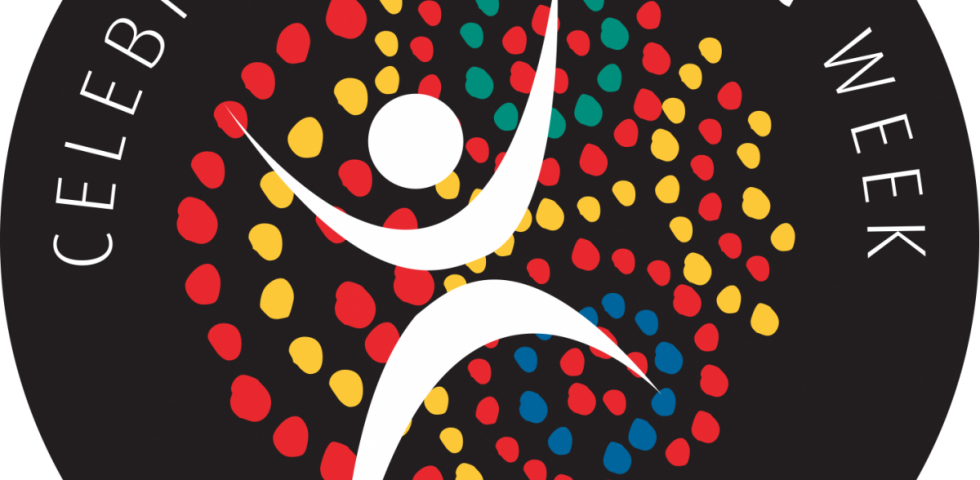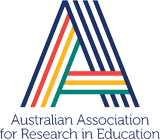
Gawaian Bodkin-Andrews
Director of Indigenous Research, Office of the Deputy Vice-Chancellor Indigenous Leadership
Western Sydney University
‘Knowledge’ about Indigenous pathology circulates as strategic truth in the race war to rationalise the continuing subjugation of the Indigenous population and encourage non-Indigenous investment in patriarchal white sovereignty (Moreton-Robinson, 2009, p.72).
It was during a meeting that I started to consider writing of the NAIDOC theme Get Up! Stand Up! Show Up! for the AARE Blog, and so my mind pleasantly drifted to all the ways in which our Mobs live this theme every day. Whether it be through activism, advocacy, participating in community empowerment initiatives, Caring for Country, Kinship Care, sharing of Stories and Songs, making artistic and creative practices, political representation, academic writing, or even sitting as a distinctly minoritorised representative/antagonist on some executive board, I saw Aboriginal and Torres Strait Islander warriors who have gotten up, stood up, and showed up, everywhere.
But then my mind drifted even further (maybe it was the debate around imagined risk management strategies and the need to mitigate the risk of personal responsibility). I thought back to my youth…
So please bear with me for a (rather embarrassing) personal tangent here.
As young male, I had a fascination with martial arts, and dreamt of fighting along-side the likes of Van Dame, Chuck Norris, and Stephen Segal (it’s all about risk management eh?). I devoured quite misogynistic martial arts fiction by John Donohue, Eric Van Lustbader, James Clavell, and Dov Silverman. For the periods in which my parents could afford it, I attended Tae Kwon Do and Ninjutsu classes, and later, when I could afford it myself, I spent over twenty years committed to a particular style of traditional Kung Fu. You could say martial arts, in varying guises, has stuck with me until my mid-40s - for better or for worse?
Interestingly, and for reasons I cannot explain, these youthful imaginations of mine never saw a particular type of meeting. There was no imaginary meeting between the likes of ‘Connor Burke’, ‘John Blackthorne’, ‘Nicholas Linnear’, and ‘John Mung’ of the martial arts fiction worlds and the Aboriginal warriors whose names I was also brought up with: Pemulwuy, Tedbury, Bundel, Cannabayagal, and Durelle (all who, at times, walked the Galumban – the Home Country - I am deeply connected to).
As I pondered this during the meeting, my mind came to a significant realisation. Notedly, the martial arts ‘warriors’ I previously referred to were all imagined by white-men. I also realised that this white-imaginary also thankfully never crossed paths with the heroes within the D’harawal Garuwanga (Dreaming) Stories I was raised with, like: Dharamoy, Burrugin, Mananga, Boonah, and Murrogan to name just a few.
At this point, the meeting was paused for a coffee-break (or should I say little lunch?), and whilst I was congratulating myself that this particular ‘cultural interface’ had seemingly never eventuated in my mind, I suddenly found myself under the stinging gaze of critical (and cultural) self-reflection.
So, I tried to stop thinking from the foundations of white men’s’ imposed imaginations, and to instead remember. I remembered Tiana, a young D’harawal woman who in a period of great darkness and hopelessness, revived the near forgotten lessons of the Ancestral Stories and returned to a sacred place of Creation… and brought the sun back.
I remembered Wiritjiribin, the old grandmother whose sacrifice ensured the survival of the D’harawal children during a great fire. She returned as our clan totem, the lyrebird.
I remembered Burrumurring, the magic woman who not only reminded Mananga of his duties as a warrior, but gave him the power, and responsibility of the wedge-tailed eagle to watch over and protect our peoples.
I remembered Oorawong, who Murrogan desperately sought to save from the man who had violently stolen her, but through her fortitude and medicinal knowledges, had already escaped. Through the two warriors’ love, they became what is now called the cryptocarya microneura and cryptocarya glaucescens.
Through this remembering, my thoughts returned to the NAIDOC theme, and I remembered the Aboriginal and Torres Strait Islanders scholars who, by standing up and showing up in their very work, thankfully tore me away from the white-imagining of my academic career. For example, in my thesis focusing on Indigenous student ‘self’-perceptions (note. inverted comma’s indicate sarcasm here) submitted back in 2008, I had listed around 300 references. Of these works, just over 10 had Aboriginal and Torres Strait Islander peoples as lead authors (you could say I successfully reached ‘parity’ here – sarcasm again).
I feel a great debt to these scholars who have paved the way before me. The writings of the likes of – Narungga, Kaurna and Ngarrindjeri scholar Lester Irabinna Rigney who has called for centring of Indigenous voices and leadership in research (Rigney, 1999); of Goenpul – Quandamooka scholar Aileen Moreton-Robinson who reminded me that Indigenous research is an ongoing war against the pathologies of patriarchal white sovereignty (Moreton-Robinson, 2009); of palawa scholar Maggie Walter who suggested we use western research methods like a Trojan Horse to drive an Indigenous focused-and-led research agenda (Walter, 2005); of Noonuccal and Bidjara scholar Karen Martin who taught that Indigenous research is not about ‘participation’, but a duty towards interrelatedness where we must seek to honour our communities, Ancestors, and Countries and all its entities (Martin, 2008); of Goenpul and Waka scholar Tracey Bunda who not only demands respect for the sovereign black woman, but also that our own very imaginings be expressed through our tribal voices, our literature, our sovereignties (Bunda, 2007).
The alternative offered by white-men’s pathological imaginings is one of forgetting, one of erasure, an erasure that at times may never be undone. For example, in 1816, then governor Lachlan Macquarie declared war on Aboriginal peoples of the Sydney region (including the D’harawal). Today, the white-men’s imagining may rejoice in debating whether this was a war or not, yet Macquarie’s orders were clear enough:
On any occasion of seeing or falling in with the Natives… they are to be called on… to surrender themselves to you as Prisoners of War… If they refuse to do so, make the least show of resistance, or attempt to run away from you, you will fire upon and compel them to surrender… Such Natives as happen to be killed on such occasions, if grown up men, are to be hanged up on trees in conspicuous situations, to strike the Survivors with the greater terror... On all occasions of your being obliged to have recourse to offensive and coercive measures, you will use every possible precaution to save the lives of the Native Women and Children, but taking as many of them as you can Prisoner” (Governor Macquarie’s instructions to Captain Schaw of the 46th Regiment – April 9, 1816 cited by Organ, 2014, p. 2).
It is well known that the warriors, the heroes, Cannabayagal and Durelle were hung after the Appin Massacre, with their heads later removed to sit in white-men’s museums… still today.
What is not as well known (and seemingly erased from the white-man’s written archives), is that there was a third body that was hung and their skull later stolen from these lands - a third warrior who resisted the colonisers in the early hours of April 17, 1816 (Pickering, 2010)… It was the skull of a woman whose name has been erased.
It is my duty to remember the Stories of my Ancestors, the all the warriors who fought to survive the Frontier Wars and subsequent massacres, the freedom fighters, activists, the Blackademics. It is my duty to remember those who have been forgotten. Get Up! Stand Up! Show Up! and continue the remembering.
References
Bunda, T. (2007). The Sovereign Aboriginal Woman. In A. Moreton-Robinson (ed), Sovereign Subjects: Indigenous Sovereignty Matters (pp. 75-85). Allen & Unwin: Crows Nest, New south Wales, Australia.
Martin KL (2008) Please knock before you enter: Aboriginal regulation of outsiders and the implications for researchers. Post Pressed: Brisbane, Queensland, Australia.
Moreton-Robinson, A. (2009). Imagining the good indigenous citizen: Race war and the pathology of patriarchal white sovereignty. Cultural studies review, 15(2), 61-79.
Organ, M. K. (2014). Secret Service: Governor Macquarie’s Aboriginal War of 1816. Senior Deputy Vice-Chancellor and Deputy Vice-Chancellor (Education) Papers. https://ro.uow.edu.au/asdpapers/481/.
Pickering, M. (2010). Where are the Stories?. The Public Historian, 32(1), 79-95.
Rigney, L. I. (1999). Internationalization of an Indigenous anticolonial cultural critique of research methodologies: a guide to Indigenist research methodology and its principles. Wicazo Sa Rev, 14(2),109–121
Walter, M. (2005). Using the 'power of the data' within Indigenous research practice. Australian Aboriginal Studies, 2, 27-34.
